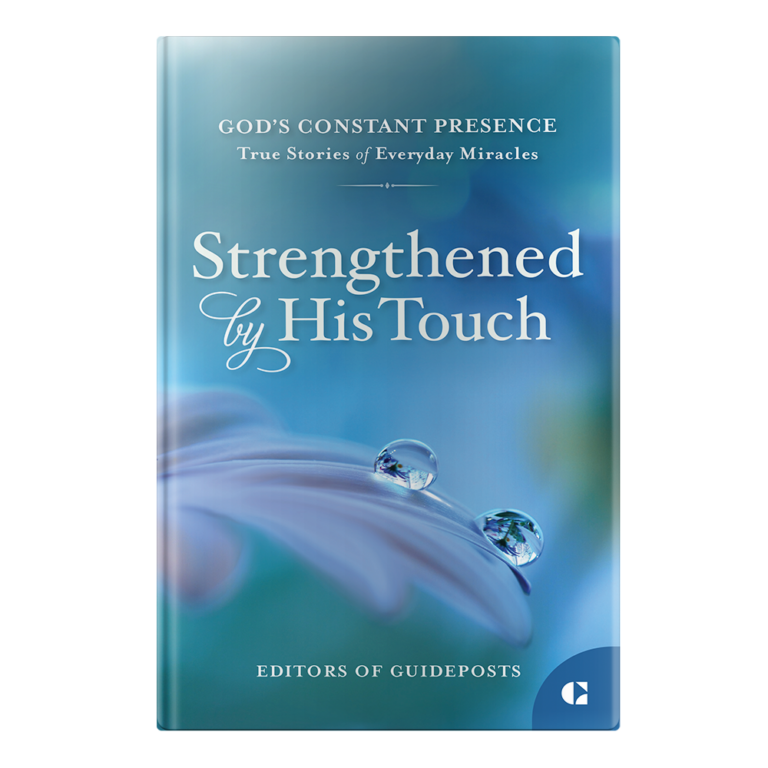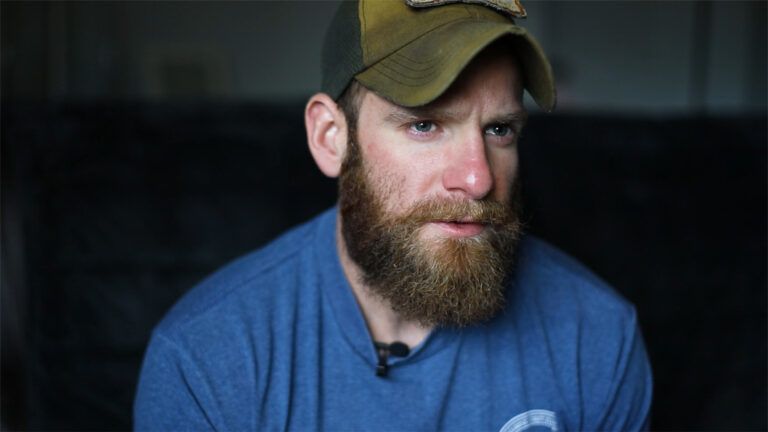It was March 2013. I’d come here to heal the wounds of a long-ago war, revisiting the city of my nightmares to meet Gustav Schaefer, hoping he might answer a question that haunted me still. I stood with my back to Cologne Cathedral, scanning the crowd for anyone old enough. I couldn’t find Gustav. Had he changed his mind?
Sixty-eight years before, in 1945, I was a tank gunner in the Third Armored Division when we rumbled into Cologne, a city spanning the Rhine. We were nicknamed Spearhead—a title we’d earned. My crew was among the first to battle its way into Germany. We froze our tails off during the Battle of the Bulge.
I suppose we handled ourselves well, which is why we got a Pershing tank, the U.S. Army’s answer to the more heavily armed and armored German Panther and Tiger. We had one of only 20 in the entire European Theater. It was presented to us like an award, but it was a curse. As the heaviest tank, we were always first in line, first around the corner, first over the hill. It skinned our nerves raw, but what could you do? Someone had to go first.
Cologne was particularly dangerous. American bombs had created a labyrinth of blocked streets and ambush points. We worried about German tanks and watched for bazooka teams in the buildings. People think tanks are safe, but that’s an illusion. If your tank gets penetrated, all that armor around you turns into shrapnel. The ammo and fuel you’re sitting on can erupt into a volcano of fire. We particularly feared the German Panzerfaust, a bazooka round that turned to boiling metal when it hit, burning through tank armor and spraying molten steel inside.
All you could do was shoot first and hope to get them before they got you. That and pray. I never really learned to pray. Instead, I just talked to God—asking that we make it through each city block, make it to nightfall. Touching the Bible in my breast pocket. As we neared the cathedral square that day in 1945, I knew German tanks were waiting. I would be meeting Gustav for the first time, though I didn’t know it was him, not then. All I saw was a German tank peeking out from behind a building. When we pulled up to the intersection, it spotted us and backed into an alley. Suddenly, a black blur crossed my gunner’s scope. It was low, with gray camouflage. An Opel sedan.
“Staff car!” my tank commander yelled, and I fired. Our officers had told us anything on wheels was German military. Orange machine gun tracers chased the car down the street. The Opel turned toward the hidden tank, and a stream of green tracers—the German tank’s machine gun—crossed our orange ones.
The Opel slowed to a stop. I dismissed it. My concern was the tank. I fired again and again into the building that sheltered it. The building leaned backward like a dazed boxer, then collapsed, burying the tank. We crossed the intersection and passed the Opel. I saw no camouflage, no official markings or insignia—just a black car covered with dust. Medics huddled around the exploded windows, treating someone beside the passenger door. I glimpsed curly brown hair. A woman. Who was she? A Nazi fanatic? We’d encountered those. Some general’s mistress? Whoever she was, we left her behind and continued patrolling the area.
An hour later, my crew and I outdueled another tank, a Panther, in the cathedral square. An Army cameraman who had been following us that afternoon got it on film and cut a newsreel, making us the most famous tank crew in the European Theater. I never saw the newsreel during the war. I’ve been told it was called the greatest tank duel in history. But not the greatest day in my life.
I went home, married and got a job managing a cinder block factory. I tried to forget that day, the worry that I’d fired on a civilian. We won, I told myself. That was the important thing.
But in 1996, when I was 72, Cologne came back. A war buddy told me he’d seen our duel with the Panther in a documentary called Scenes of War. I ordered a copy. After all those years, part of me was curious to relive the battle.
I slipped the VHS into the machine and hit play. There was the four-way intersection. I expected to see the confrontation with the Panther, but instead, the Opel swerved into view. I watched in horror as tracers from the Pershing’s machine gun—my machine gun—puffed dust from the car’s trunk, a sign of a hit. I didn’t see the driver, but medics clustered around a young woman who spilled from the passenger door. They pulled up her sweater, probed her wounds and gave up. They covered her with a jacket.
I prayed it wasn’t me who had fired the shot that had killed her. Yet I’d watched just that. I didn’t want her to die, but she did. On every viewing.
I searched for the woman’s identity. With the help of a German journalist friend, I discovered she wasn’t some officer’s mistress or a fanatic; she was Katharina Esser, a 26-year-old grocery employee. Friends called her Kathi. Her boss, Michael Delling, had offered to drive her to safety, and I found out he’d been killed as well.
I never imagined that in my eighties I would fear the dark, but now I lay awake, afraid to sleep. When I did, I dreamed of stumbling on Kathi’s body in the blighted streets of Cologne. During the day, I sat listless and depressed. I couldn’t share my terrible thoughts with my wife, Melba. She was in the grip of Alzheimer’s and, after 61 years of marriage, couldn’t remember my name. I’d promised Melba I would never put her in a nursing home, but her care consumed what little energy I had. To be there for her, I knew I had to fix myself somehow.
The VA psychiatrist had diagnosed my demons as post-traumatic stress disorder and prescribed antidepressants and anti-anxiety pills. The medications masked my pain but couldn’t erase my guilt. This wasn’t some dusty memory from 1945. This guilt was fresh, taking root the moment I’d seen Kathi’s face on my TV screen. It was a moral injury, an injury to my soul. I tried going to group therapy for veterans, but I was embarrassed at the idea of venting my sorrows to these younger men, mostly Vietnam vets, whose pain was so raw.
In a last-ditch attempt to find answers to the questions that tormented me, I acquired the original uncut footage from the National Archives. I played the film in slow motion, tracking the movements of the infantrymen from frame to frame, looking for clues to prove someone else fired the fatal shot. I remembered that stream of green tracers and hoped the German gunner—the one I’d brought the building down on—had seen what happened.
Had he even survived? My journalist friend unearthed evidence he was alive. I arranged a meeting, wondering if he was as haunted as I was about Kathi. Now here I was in Cologne, looking for my old enemy. At last, I saw him—a small man neatly dressed in a tie and black jacket, his nervous eyes sheltered behind transition lenses. I stretched out my hand and smiled. I leaned close and said, “The war is over. We can be friends now.”
“Ja. Ja,” he replied.
We retired to a hotel and sipped beer, speaking through a translator. I’d never met a German soldier before, but Gustav had experience with Americans. After Cologne, he’d spent the rest of the war as a POW, serving food to GIs. Upon release, he returned to his childhood farm in Northern Germany and worked driving bulldozers. Retired and a widower, he enjoyed touring foreign cities on Google Earth. As the conversation eased, we found common ground—in humor.
“Did your tank have a bathroom?” I asked. “They forgot to put one in mine.”
“Yes, we did,” Gustav retorted. “Empty shells!”
He told me about his tight-knit farm family. How the Nazis took his Jewish neighbors and rampaged through his village. Gustav hadn’t wanted to be in Cologne any more than I had. After his tank got buried in bricks, he and one crewman surrendered. The others kept fighting; he never saw them again.
Finally, I found the courage to say it: “I still see her in my dreams…the woman in the car.” I didn’t have to explain. Gustav had seen the footage too. Ever since, he’d had nightmares in which he was trapped in his tank, watching Kathi bleed to death. He’d never talked about it either. “Who would understand?”
The next morning, we walked to the intersection. It was time to confront the past. New buildings made it difficult to get oriented, but when we arrived, we knew we were at the right spot. Standing there, I confessed. “It happened so fast, and I was afraid.”
Gustav nodded. That’s why he’d fired too, he admitted. He’d thought the car was American until the shattered vehicle stopped in front of him and he saw his doomed countrymen.
Stunned, I looked at the street. It had been crossfire. Could we both bear responsibility?
They never should have been there, Gustav continued. They drove right into a battle. If they’d holed up in a basement, they would have survived. “It’s war,” he said. “It’s in the nature of it. It can’t be undone.”
He was right. None of us should’ve been there. Not me, not Gustav, not Kathi Esser. Not any of the others who died in that terrible and terrifying war.
The graves lay nearby, at St. Gereon’s Basilica. First, Gustav and I each laid a yellow rose before a cross labeled MICHAEL JOHANNES DELLING, 1905–1945. Then we found a common plot marked THE UNKNOWN DEAD, where we’d been told Kathi Esser was buried because she’d been found without her ID papers. The vase at the foot of the triangular eave with the cross was empty. Gustav slid a yellow rose into the vase, but as I leaned forward to do the same, I teetered. My former enemy reached out and kept me from falling.
Instead of wishing to forget, we swore to remember…and something within me let go. By facing my fears, I found peace, there at my enemy’s side. By accepting my role in something I could not prevent, I found forgiveness. I still dream of Kathi, but dreams and nightmares are different things. I’ve since met her family—gracious people who offered forgiveness. Sleep comes more easily now. I talk to God. I feel the comfort only he can give.
Gustav became my war buddy—from the other side. We exchanged Christmas cards and spoke on Skype. There were times I saw him on my computer, this little man surrounded by atlases, and thought how I might have killed him. Thank God I didn’t. The first time we met, we were encased in steel, peering through our sights, seeing each other only as war machines. The second time, we met as ourselves, unarmored, as two human beings.
Gustav is gone now, but each year on March 6, the day we truly became friends, I arrange for two yellow roses to be placed on Kathi Esser’s grave, one from each of us. Last year, I put them there myself, and I plan to go again. Some things must be remembered.
For more inspiring stories, subscribe to Guideposts magazine.






